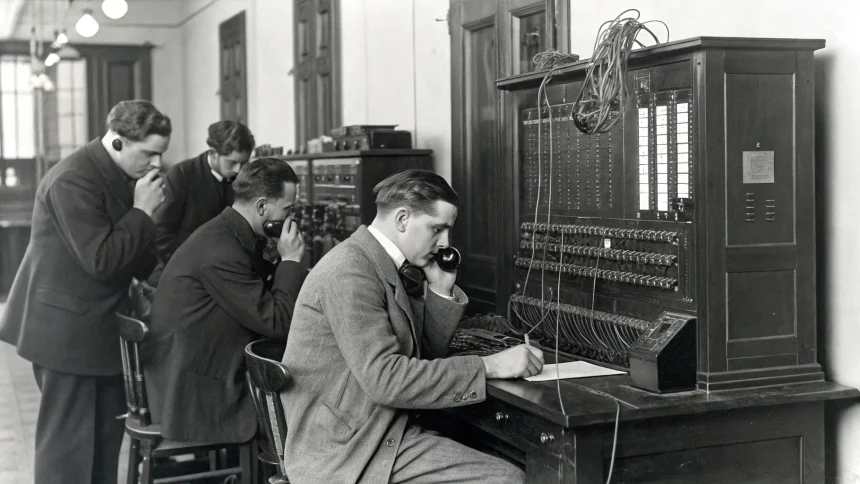The ability to call a loved one, like your mother, with the simple press of a button is something many take for granted. Yet this everyday convenience exists thanks to the groundbreaking work of several key inventors and engineers who revolutionized communication technology over the past century.
From Alexander Graham Bell’s first telephone patent in 1876 to the modern smartphone era launched by Steve Jobs, telecommunications has undergone a remarkable transformation that has fundamentally changed how people connect across distances.
The Founding Fathers of Telephone Technology
Alexander Graham Bell stands as the most recognized figure in telephone history. His patent for an “apparatus for transmitting vocal or other sounds telegraphically” laid the foundation for voice communication technology. Bell’s famous first words transmitted to his assistant—”Mr. Watson, come here, I want to see you”—marked the beginning of a new era in human connection.
However, Bell’s contribution represents just one piece of a complex technological puzzle. Antonio Meucci, who developed a voice communication device called the “teletrofono” in the 1850s, is recognized by many historians as having invented telephone technology before Bell, though he lacked the resources to patent his invention properly.
Elisha Gray, who filed a patent caveat for a telephone design on the same day Bell filed his patent, also made significant contributions to early telephone technology. The ensuing legal battles between these inventors shaped not only telecommunications but patent law itself.
From Wired Networks to Wireless Revolution
The evolution from Bell’s first telephone to today’s smartphones required numerous technological breakthroughs. Theodore Vail, who built the Bell Telephone Company into a telecommunications giant (later AT&T), created the infrastructure that made widespread telephone adoption possible.
Martin Cooper, an engineer at Motorola, made the first public mobile phone call in 1973 using a prototype of what would become the Motorola DynaTAC. This 2.5-pound device, often called “the brick,” initiated the mobile revolution that would eventually lead to smartphones.
The digital cellular networks that power modern calls emerged through the work of engineers like Richard Frenkiel and Joel Engel at Bell Labs, who developed the cellular concept that allows phones to switch seamlessly between towers while maintaining a connection.
The Smartphone Era Changes Everything
While many engineers and executives contributed to mobile technology, Steve Jobs and the team at Apple transformed telecommunications with the iPhone’s introduction in 2007. By combining a phone with internet connectivity and a touchscreen interface, they created a platform that changed how people communicate.
The subsequent development of mobile operating systems by teams at Google (Android) and Apple (iOS) created the software environment that powers modern telecommunications. These platforms support not just voice calls but video chats, messaging apps, and social media that have expanded the ways people stay connected.
“The telephone has too many shortcomings to be seriously considered as a means of communication,” Western Union internal memo, 1876
This famously incorrect prediction highlights how dramatically telecommunications has exceeded early expectations. Today’s smartphones combine multiple technologies:
- Voice and video calling capabilities
- Text and multimedia messaging
- Internet connectivity for web-based communication
- Location services for navigation and sharing
The telecommunications infrastructure supporting these devices represents one of humanity’s most complex engineering achievements, with cellular networks, fiber optic cables, and satellite systems working together to connect billions of people globally.
As telecommunications continues to evolve with technologies like 5G networks and enhanced video calling, the ability to call mom—or anyone else—becomes increasingly seamless. The next time you make that call, you might pause to appreciate the century of innovation and the countless engineers who made it possible.









